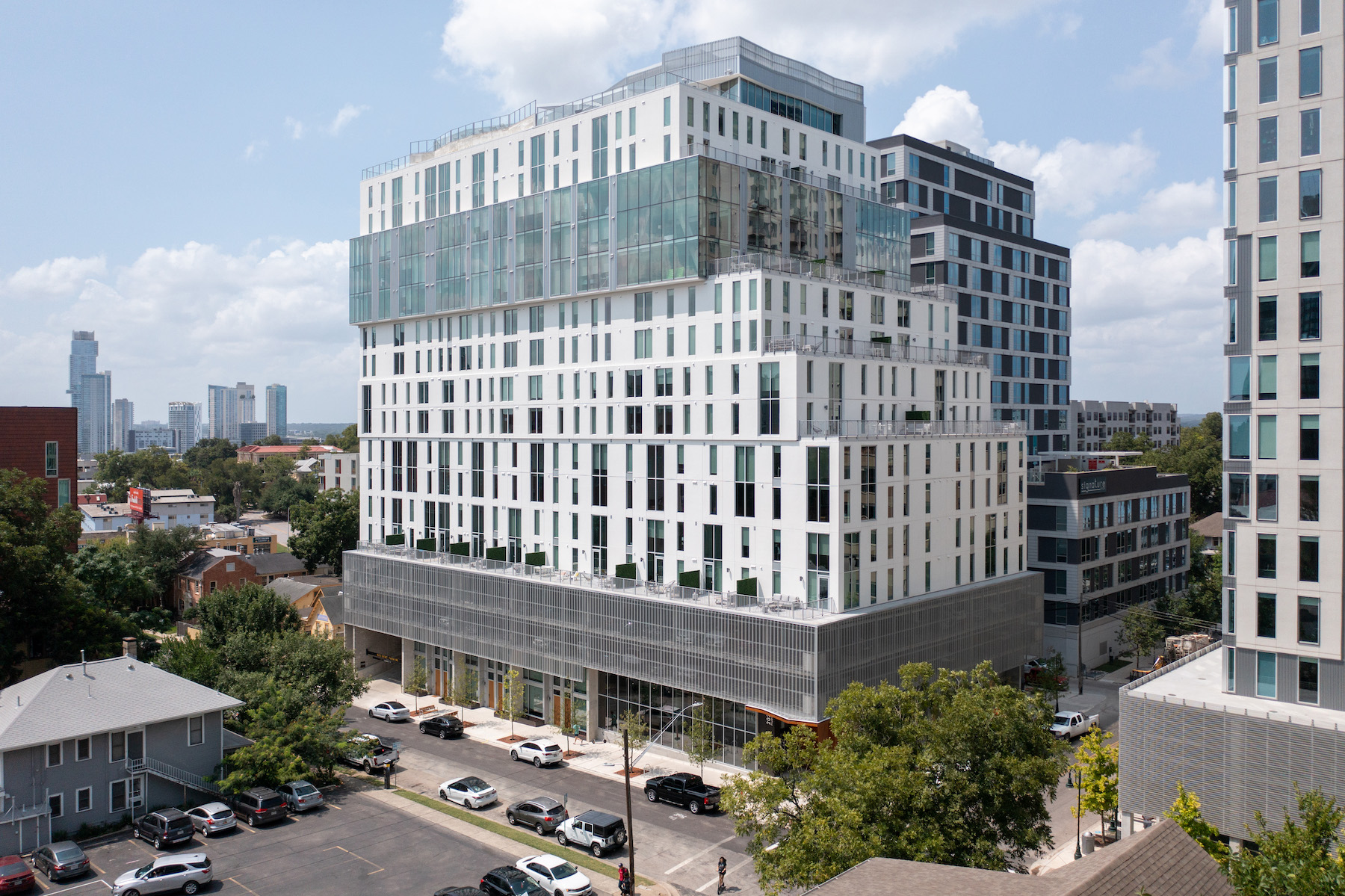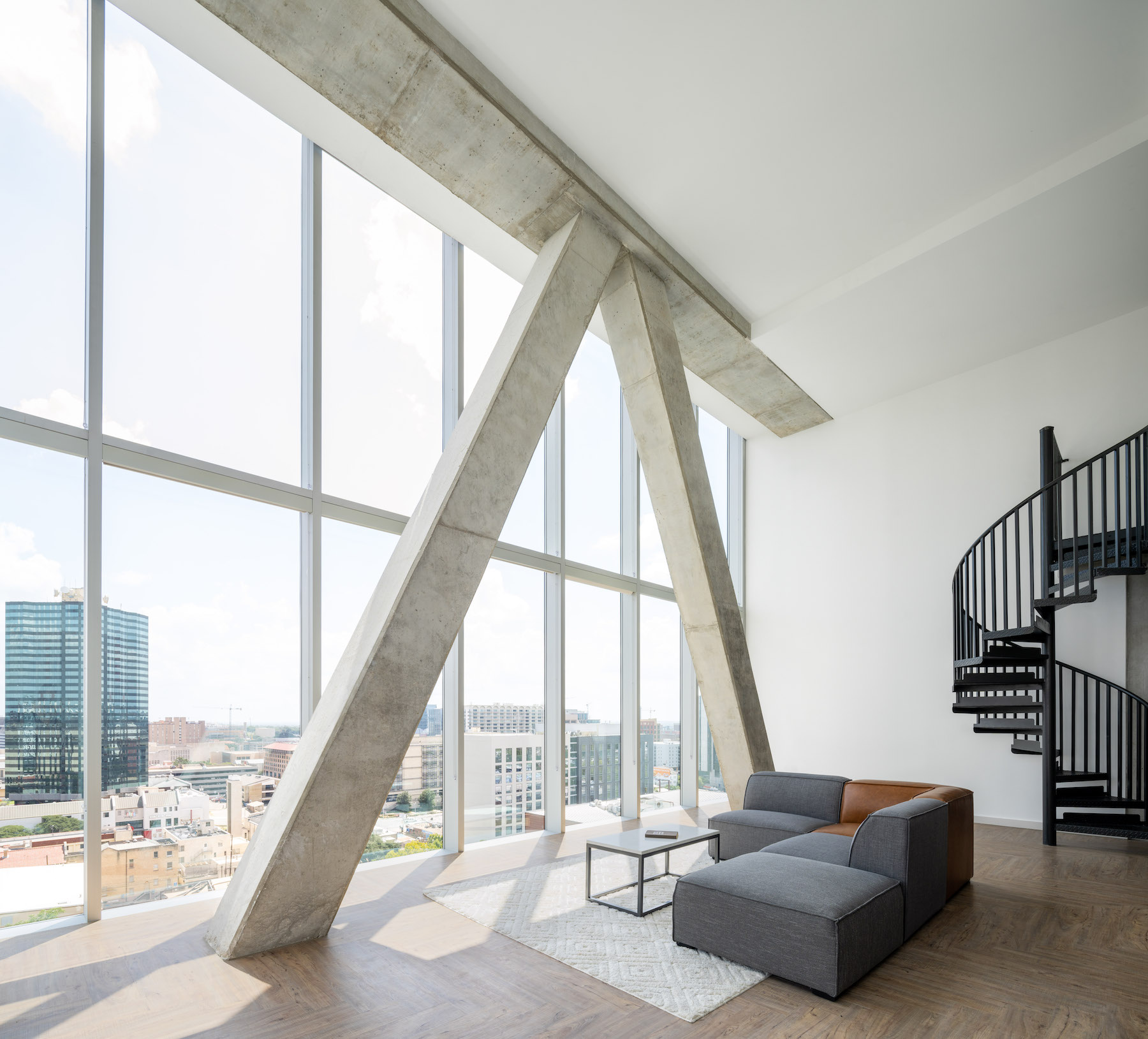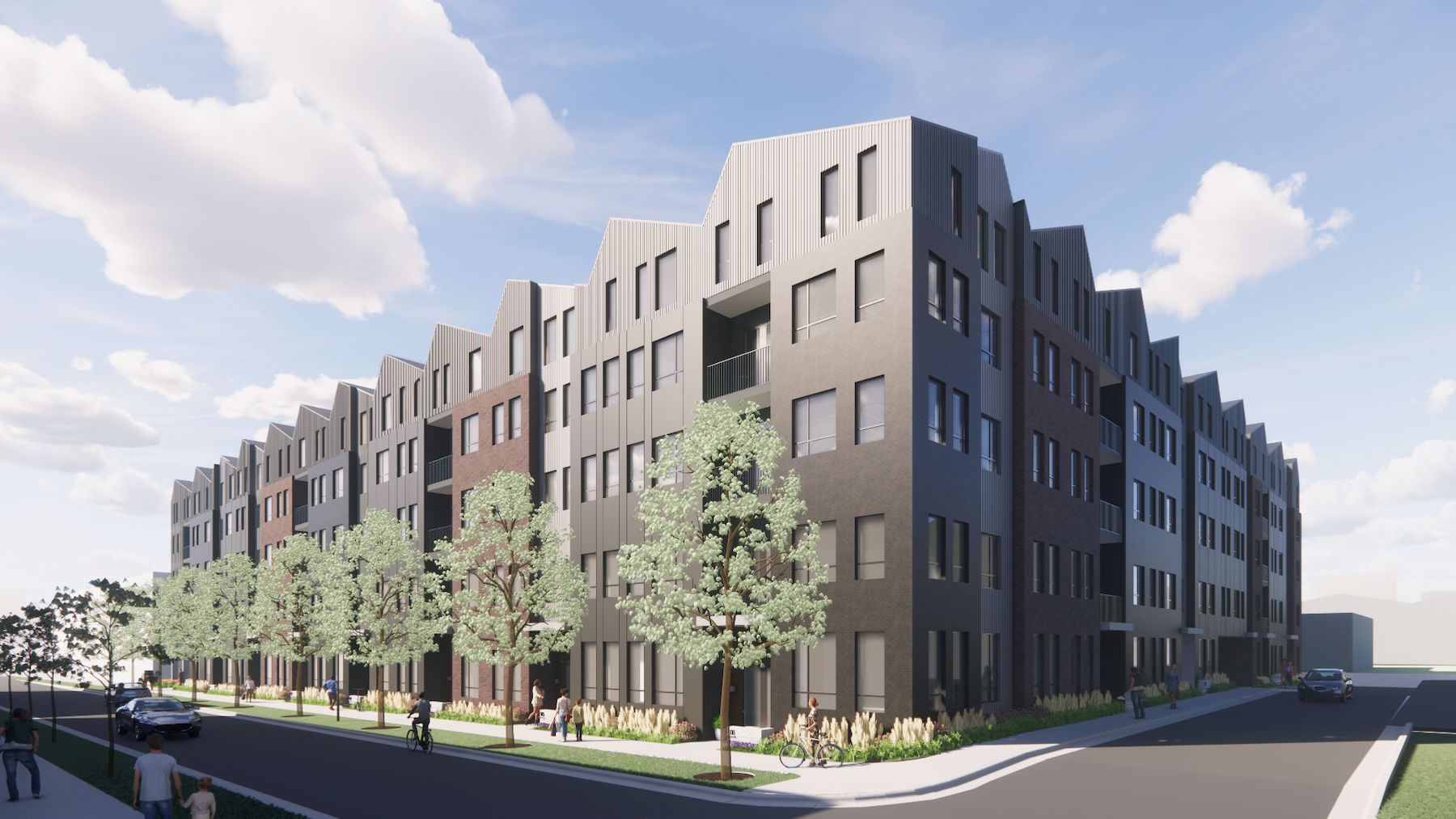As the coronavirus pandemic has subsided, investors and developers have shown renewed interest in the student housing sector. One design firm that has been capitalizing on that demand is Austin, Texas-based Rhode Partners, whose recent projects have included nine off-campus student housing buildings, with two more under construction in Austin and Columbus, Ohio, that will be completed by the summer of 2023.
Also in the works are three towers in Austin, each 30 stories tall, that when they’re delivered in 2025 and 2026 will fall in line with that city’s “upzoning,” which raised the height limit for student housing to 300 feet, from 175 feet. Robert Tait, AIA, LEED AP, a Director with Rhode Partners, says that Austin has long encouraged more development so that students could live closer to campuses, dating back to the passage a dozen years ago of its University Neighborhood Overlay Plan.
As has been the case for a while, the success of any student housing project usually rests with the amenities it provides. Tait confirms that it’s still a nuclear arms race out there among competitors, and Rhode Partners’ buildings include rock climbing, sand volleyball, and podcast spaces. Rhode, though, also showcases its buildings’ design and amenities that promote wellness and communal living. “Students crave community,” says Tait.
THE BIGGER, THE BETTER
Last March, Associated Builders and Contractors gave its Pyramid Award in Construction to the Rhode-designed Torre Apartments, an 18-story student housing tower located in the heart of the University of Texas at Austin’s West Campus neighborhood. The building’s tiered composition—including its 62-degree setback on the north side—represents a design response to specific zoning constraints and program requirements. Inside, corridors were removed at alternating levels at the townhouse tiers to create more spacious living areas and maximize rental square footage.


Under construction in College Station, Texas, is a 300,000-sf 197-ft-tall Rhode Partners-designed building whose 19 stories will offer 298 housing units with 802 beds. Its design is informed by dramatic, rounded street corners on the north, west, and east sides that help create an undulating façade. At level seven will be an amenity deck with an open courtyard and pool. On the ground floor will be the University Student Lutheran Center, study and conference rooms, a fitness facility and clubhouse.
This project’s Building Team includes LEVY (interior design), Rogers O’Brien (GC), RLG Consulting Engineers (SE), VE Consulting Engineers (MEP), Jones Carter (CE), ECS (geotechnical engineer), and InfiniSys (low voltage).
In Columbus, Ohio, where Rhode Partners first designed a student housing center in 2014, the five-story Columbus Apartments is under construction. Its 228,000 sf will include 143 housing units ranging from studios to five bedrooms. Its amenities will feature a pool deck, café, spa, fitness center, clubroom, and study rooms. The building has been designed to integrate into the surrounding residential neighborhood with a brick, metal paneling, and wood cladding façade with large picture windows and modern fixtures.
Elford, Inc. is the GC on this project, and is working with RLG Consulting Engineers (SE), McMullen Engineering (MEP), EP Ferries & Associates (CE), Geotechnical Consultants (geotechnical engineer), MKSK (landscape architect), and InfiniSys (low voltage). Austin-based Parallel is the developer.
Tait says that Rhode Partners is looking for student housing design opportunities in other markets. In its pipeline is a tower in Knoxville, Tenn., that is slated for completion in 2025. The student housing sector, he says, “is pretty exciting right now.”
Related Stories
MFPRO+ New Projects | Oct 30, 2024
BIG’s One High Line finally reaches completion in New York City’s West Chelsea neighborhood
One High Line, a luxury residential project spanning a full city block in New York’s West Chelsea neighborhood, reached completion this summer following years of delays related to investor lawsuits.
MFPRO+ New Projects | Oct 30, 2024
Luxury waterfront tower in Brooklyn features East River and Manhattan skyline views
Leasing recently began for The Dupont, a 41-story luxury rental property along the Brooklyn, N.Y., waterfront. Located within the 22-acre Greenpoint Landing, where it overlooks the newly constructed Newtown Barge Park, the high-rise features East River and Manhattan skyline views along with 20,000 sf of indoor and outdoor communal space.
Multifamily Housing | Oct 28, 2024
A case for mid-rise: How multifamily housing can reshape our cities
Often referred to as “five-over-ones,” the mid-rise apartment type is typically comprised of five stories of apartments on top of a concrete “podium” of ground-floor retail. The main criticism of the “five-over-one” is that they are often too predictable.
Adaptive Reuse | Oct 22, 2024
Adaptive reuse project transforms 1840s-era mill building into rental housing
A recently opened multifamily property in Lawrence, Mass., is an adaptive reuse of an 1840s-era mill building. Stone Mill Lofts is one of the first all-electric mixed-income multifamily properties in Massachusetts. The all-electric building meets ambitious modern energy codes and stringent National Park Service historic preservation guidelines.
MFPRO+ News | Oct 22, 2024
Project financing tempers robust demand for multifamily housing
AEC Giants with multifamily practices report that the sector has been struggling over the past year, despite the high demand for housing, especially affordable products.
Products and Materials | Oct 17, 2024
5 multifamily tech products for your next project
Multifamily housing and technological upgrades go hand-in-hand. From the rise in electric vehicle charging needs to the sophistication of smart home accessories, tech products are abound in the multifamily space.
Codes and Standards | Oct 16, 2024
North Carolina’s code policies likely worsened damage caused by Hurricane Helene
The North Carolina Legislature’s rejection of building code updates likely worsened the damage caused by Hurricane Helene, code experts say. Over the past 15 years, lawmakers rejected limits on construction on steep slopes, which might have reduced the number of homes destroyed by landslides.
MFPRO+ News | Oct 16, 2024
One-third of young adults say hurricanes like Helene and Milton will impact where they choose to live
Nearly one-third of U.S. residents between 18 and 34 years old say they are reconsidering where they want to move after seeing the damage wrought by Hurricane Helene, according to a Redfin report. About 15% of those over age 35 echoed their younger cohort’s sentiment.
Student Housing | Oct 9, 2024
University of Maryland begins work on $148 million graduate student housing development
The University of Maryland, in partnership with Campus Apartments and Mosaic Development Partners, has broken ground on a $148.75 million graduate student housing project on the university’s flagship College Park campus. The project will add 741 beds in 465 fully furnished apartments.
MFPRO+ News | Oct 9, 2024
San Francisco unveils guidelines to streamline office-to-residential conversions
The San Francisco Department of Building Inspection announced a series of new building code guidelines clarifying adaptive reuse code provisions and exceptions for converting office-to-residential buildings. Developed in response to the Commercial to Residential Adaptive Reuse program established in July 2023, the guidelines aim to increase the viability of converting underutilized office buildings into housing by reducing regulatory barriers in specific zoning districts downtown.

















